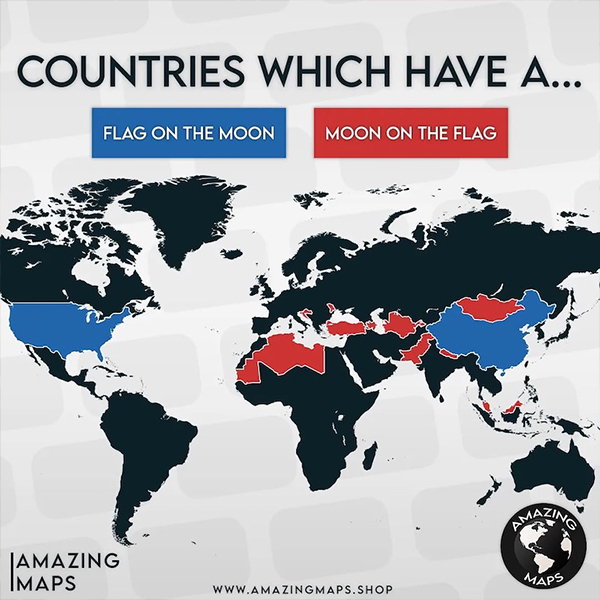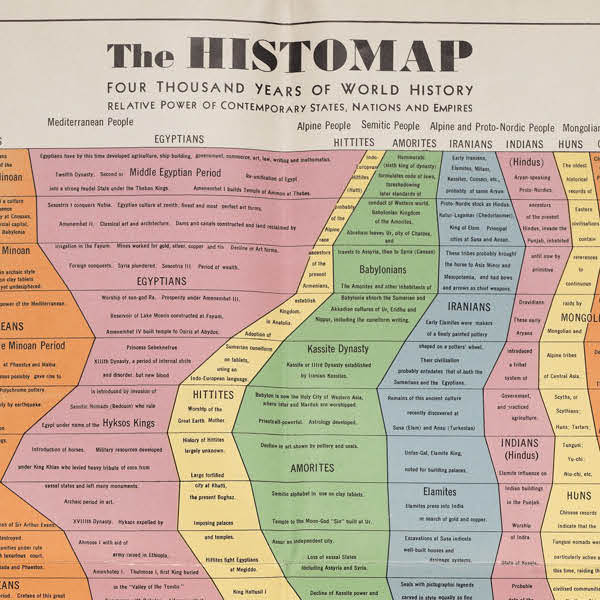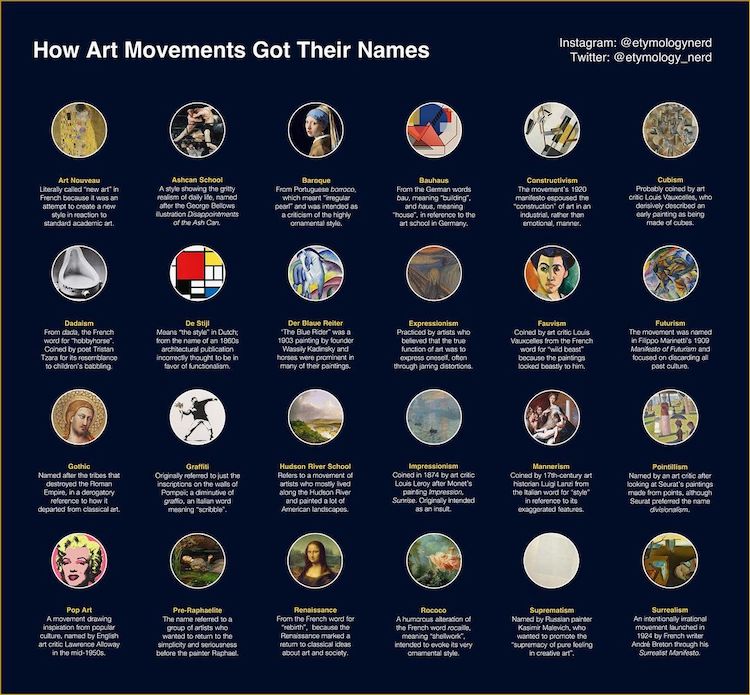
Have you ever wondered why we call Cubism… well, Cubism? Or how the artistic movement Futurism got its name? Adam Aleksic, aka Etymology Nerd, reveals the how and why some of the biggest—and most influential—art movements have their memorable titles. He published an infographic on social media that features 24 art movements with brief explanations of the stories behind the names.
Some of the movements featured are fairly self-explanatory. Renaissance, for instance, is called that because it is the French word for “rebirth” and marked a return to classical ideas regarding art and society. Expressionism got its name because the artists involved in the movement believed that art is primarily meant as a way to express oneself. But others are less obvious. Rococo is a great example of this; it’s a play on the French word rocaille, meaning “shellwork” that’s meant to “evoke its very ornamental style.”
Aleksic’s infographic combines his love of etymology infographics and desire to learn more about art history. “I started by putting together a document with the name origins and sources. I drew from etymology reference sites, encyclopedias, and art museum webpages,” he tells My Modern Met. “It was funny to see that so many movements got their names from someone trying to insult them. I particularly liked the story of Louis Vauxcelles, a snobby French art critic who accidentally named both Fauvism and Cubism while making derisive comments about them.”
Scroll down to learn more about the name origins of 24 art movements. Then, learn more about the names of musical instruments, flowers, birds, and more, by visiting the Etymology Nerd Instagram.
Learn how some of the most influential art movements got their names.
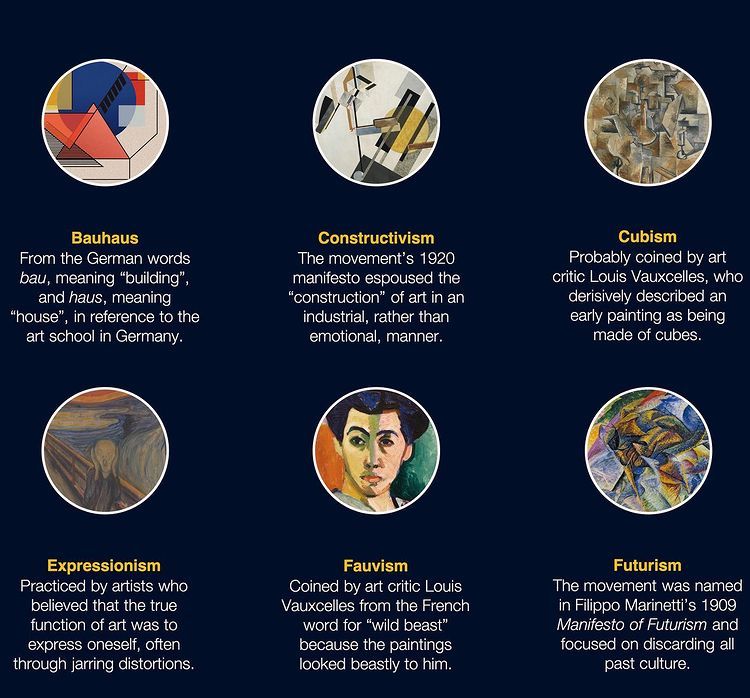
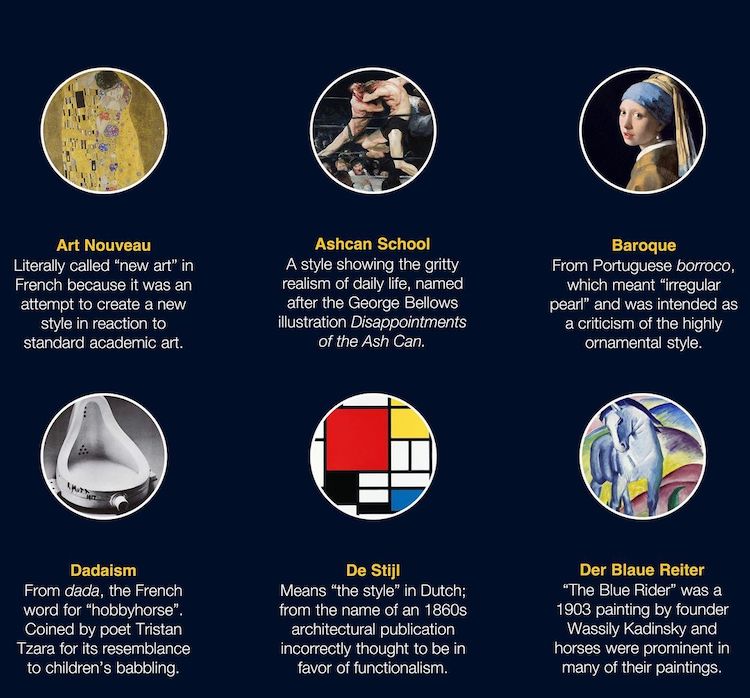

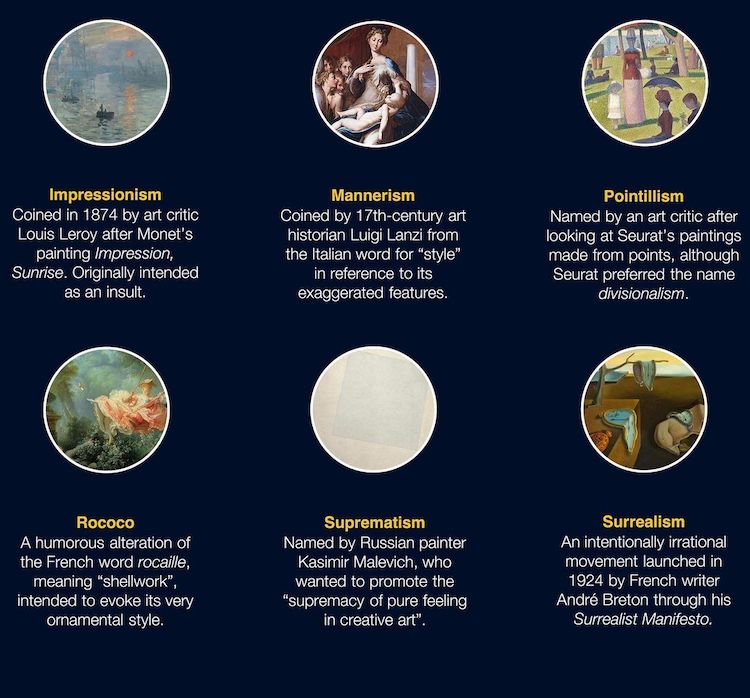
Etymology Nerd: Website | Instagram
My Modern Met granted permission to feature photos by Adam Aleksic.
Related Articles:
Helpful Infographics Visualize Complex Branches of Math and Science
30+ Creative Infographics to Keep Your Mind Active and Entertained













































































